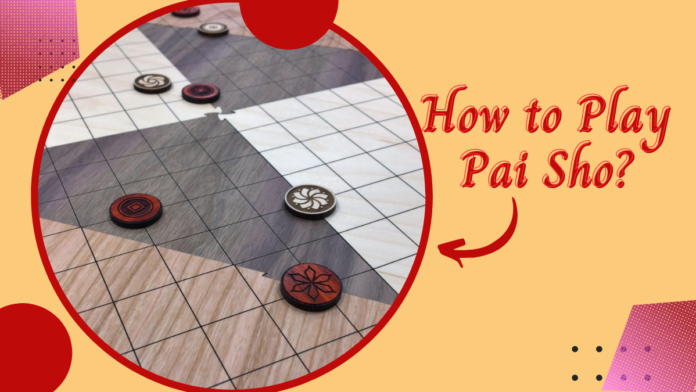Welcome, fellow strategists and game enthusiasts, to our guide on how to master the ancient art of PAI SHO! Originating from the mystical lands of Avatar: The Last Airbender, this captivating board game is a true test of strategic prowess.
Whether you’re an avid fan seeking to immerse yourself in the world of bending or a curious beginner eager for a new gaming adventure, we’ve got you covered.
Join us as we unravel the secrets behind PAI SHO’s intricate gameplay and unlock the path to becoming a true Pai Sho Grandmaster!
What is Pai Sho?
Pai Sho is a Chinese game that is similar to Mahjong. It is usually played with four players, although three-player and two-player variants exist. The game is played with a set of 144 tiles, which are divided into four suits: coins, strings, myriads, and seasons.
There are also four jokers, which can be used to replace any other tile in the game. The aim of the game is to remove all of the tiles from your hand and to score points by creating certain patterns with the tiles.
The game starts with each player being dealt 13 tiles. The remaining tiles are placed face down in the center of the table, and one tile is turned over to start the first row of the wall.
Players take turns to draw a tile from the wall and place it in front of themself, before discarding one tile.
The discarded tile is placed face up in front of the player so that all players can see it. The first player to remove all 13 tiles from their hand is the winner.
To score points, players need to create certain patterns with their tiles. These patterns include:
- A straight: A row of three sequential numbers in the same suit (e.g. 3 coins, 4 coins, 5 coins).
- A triplet: Three identical numbers in any suit (e.g. 3 myriads).
- A quad: Four identical numbers in any suit (e
Rules of the Game
In PAI SHO, there are a few basic rules that govern the game. The first rule is that each player must have a set of tiles, with each tile having a different point value.
The second rule is that the players must take turns placing their tiles on the board, with the goal being to create matching sets of tiles.
The third rule is that the player who creates the most matching sets of tiles wins the game.
How to Set Up a Game of Pai Sho?
If you’re looking for a game that is both easy to learn and rewarding to master, look no further than Pai Sho! This 2-player strategy game originated in China and is similar to chess or go in terms of gameplay.
The objective of the game is to be the first player to form a “flower” with their pieces. A flower is formed when all four corners of a square are occupied by your pieces.
To set up the game, you will need:
- A Pai Sho board (or any flat surface that can be divided into a grid)
- Pai Sho tiles (or any small objects that can be used as markers)
- Two players!
Each player begins the game with 20 tiles, which are placed on the board in front of them. The remaining tiles are placed in the center of the board, within reach of both players.
Players take turns selecting a tile from the central pool and placing it on the board. The first player to form a flower wins the game!
Strategies and Tips for Winning at Pai Sho
If you’re looking to up your Pai Sho game, check out these strategies and tips. With a little practice, you’ll be racking up the wins in no time!
The first step is to learn the basics of the game. Once you understand how the pieces move and what the goal is, you can start thinking about strategy.
One simple tip is to always keep your opponents’ pieces in mind. As you make your moves, think about how they will react and what their next move might be. This will help you stay one step ahead and give you a better chance of winning.
Another thing to keep in mind is that Pai Sho is a game of patience. Don’t get too aggressive or make hasty moves – take your time and think each turn through carefully. If you can do this, you’ll find yourself in a much better position to win the game.
Don’t forget to have fun! Pai Sho is meant to be enjoyed, so make sure to relax and enjoy yourself while you play. If you do this, winning will be that much sweeter.
Variations of the Game
There are many variations of Pai Sho, but the most common is played with a standard deck of tiles. The game can be played with two to four players, and the objective is to score points by creating patterns with the tiles.
Pai Sho can be played with different rule sets, and the most popular variation is the Chinese Official Tournament Rule set.
This variation is played with four players, and the game is divided into two phases: the opening phase and the drawing phase. In the opening phase, each player chooses a tile from their hand and places it on the table face up.
The player who has the highest-scoring tile starts the game. In the drawing phase, players draw and discard tiles until they form a winning pattern.
Another popular variation is called the Taiwanese Official Tournament Rule set. This variation is also played with four players, but there are three phases: the opening phase, the middle phase, and the end phase.
In the opening phase, each player draws 13 tiles from their hand and discards one tile face up. The player who has the highest-scoring tile starts the game.
In the middle phase, players draw and discard tiles until they form a winning pattern. In the end phase, players score points based on the patterns they have created.
There are many other variations of Pai Sho, but these are two of the most popular ones that are played in tournaments.
Common Terms and Lingo Used in Pai Sho
Pai Sho is a Chinese game that dates back centuries. It’s a tile-based game that’s similar to Mahjong but with a few key differences. Pai Sho is usually played with two players, but can also be played with four.
There are 144 tiles in a Pai Sho set, which are divided into four groups: the flowers, the seasons, the animals, and the honor tiles. The flowers and seasons tiles both have 12 tiles each, while the animal’s group has 16 tiles and the honor group has 28 tiles.
Each tile has a unique symbol on it, which helps players keep track of what they have and what they need to complete a hand.
To win a game of Pai Sho, players need to collect certain combinations of tiles. The most basic combination is called a pong, which is three identical tiles.
There are also more complex combinations like the chow (a run of three sequential tiles) and the kong (four identical tiles).
Players can also complete a hand by collecting all four of one type of tile (such as all four seasons) or by collecting all four flowers and all four seasons.
Pai Sho is typically played with betting, so there’s also some lingo associated with that. To “ante up” means to put money into the pot before the start of a hand. If you “go bank” or “go broke,” that means you’ve lost all your money and are out of the game. Finally,
Conclusion
PAI SHO is an ancient Chinese tile game that is still played today. It has a simple but strategic set of rules which make it fun for all levels of players.
With its long history, there are many variations and adaptations to the game that can be made, allowing for endless hours of entertainment!
Whether you’re looking for something new to play with friends or just want to challenge yourself while mastering this classic game, PAI SHO is sure to provide an entertaining experience.







